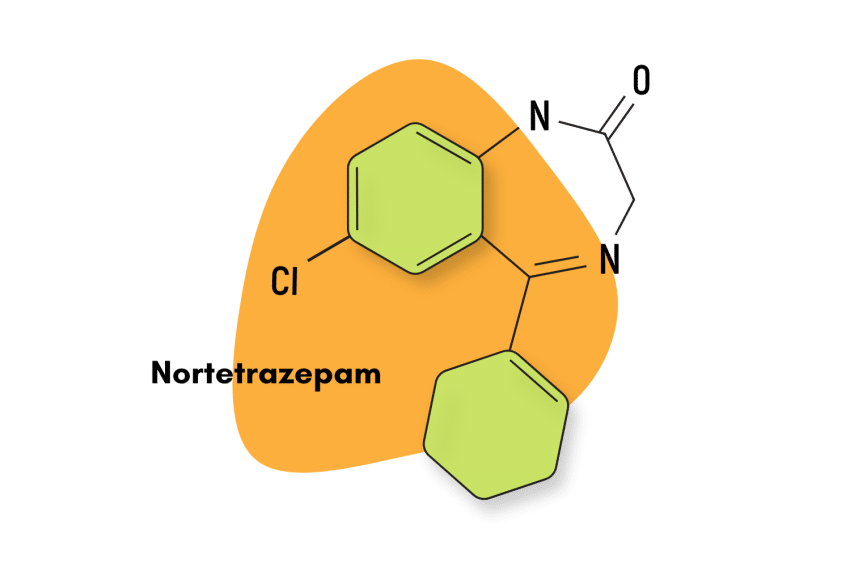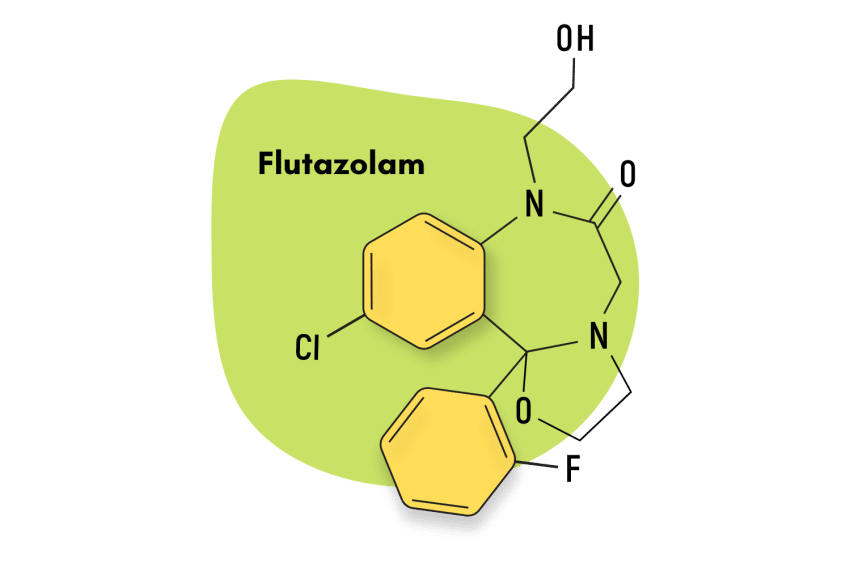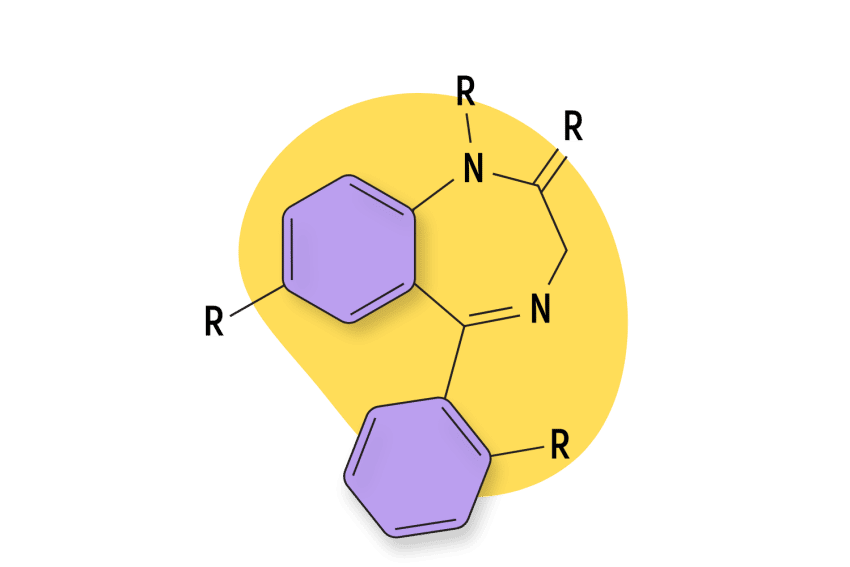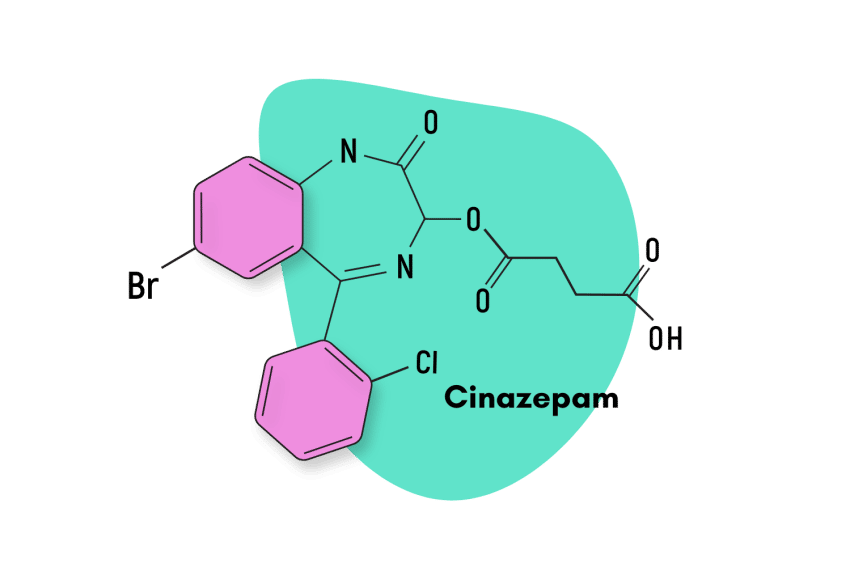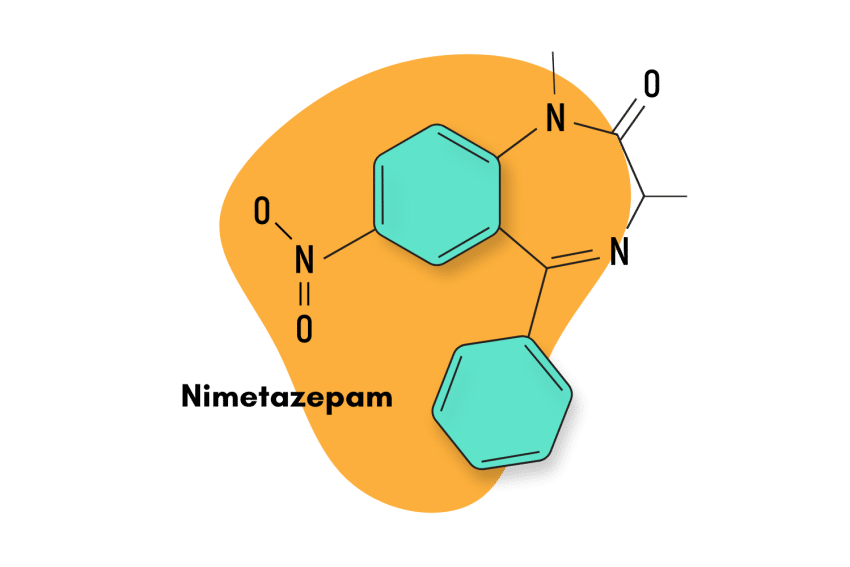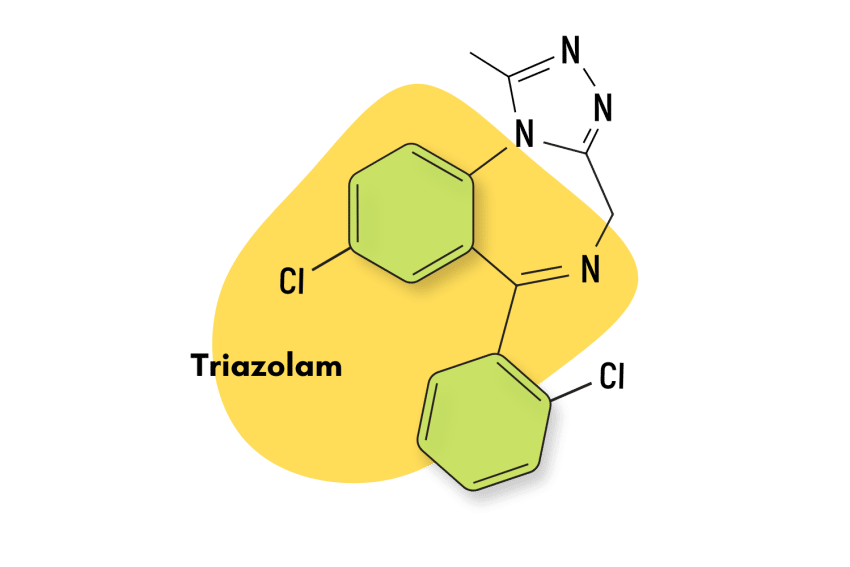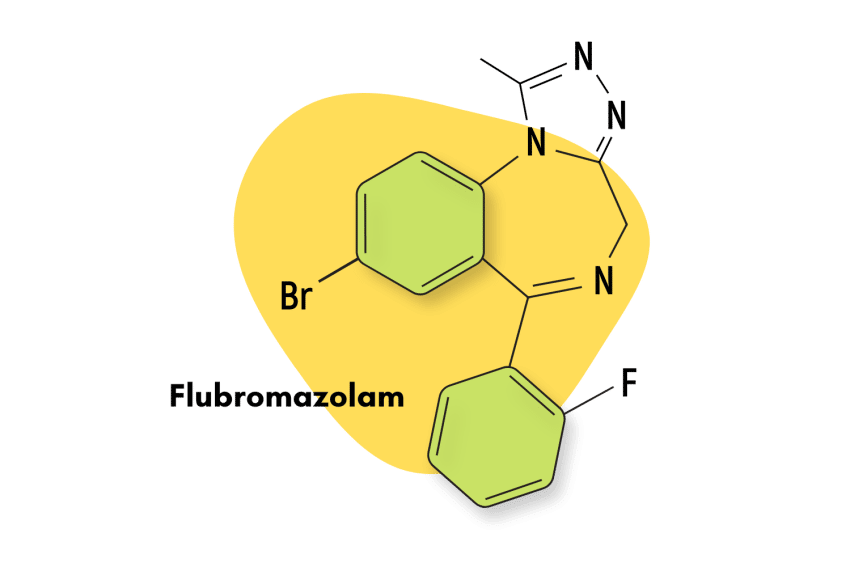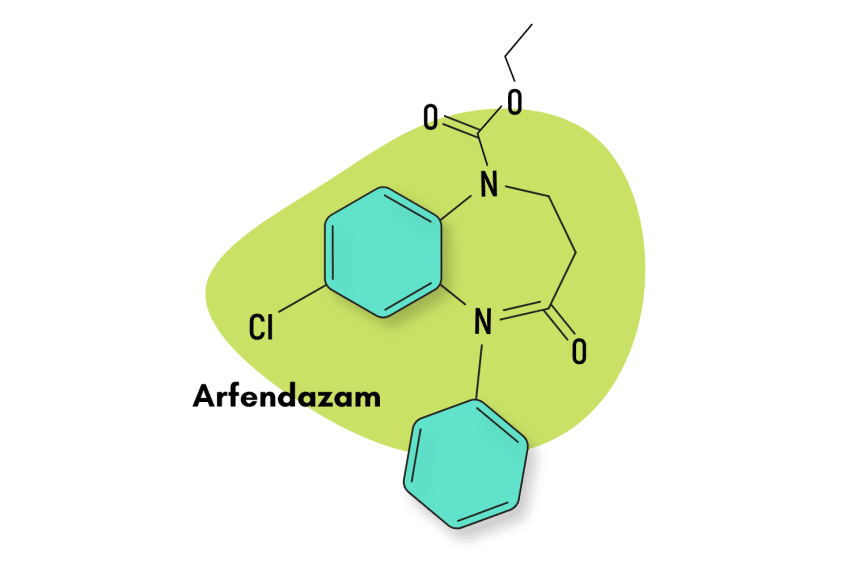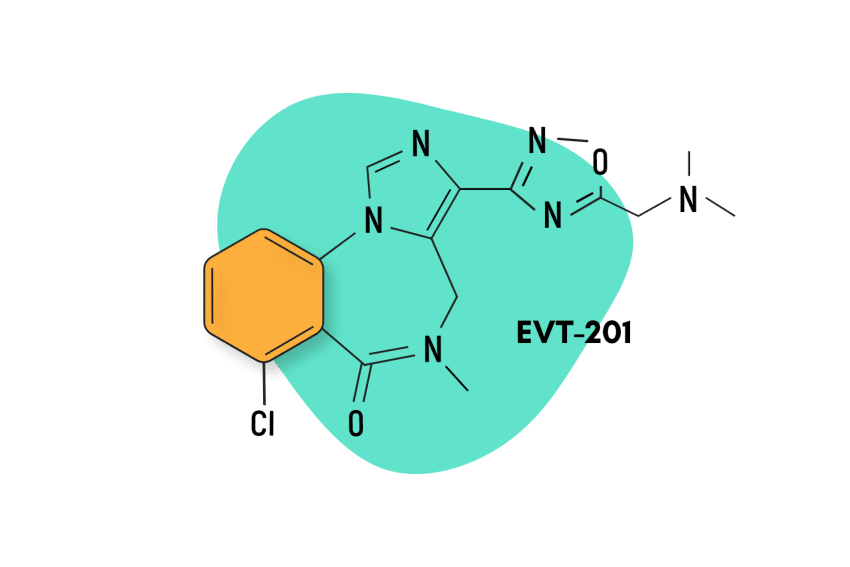Clonazolam: A Potent Designer Benzodiazepine
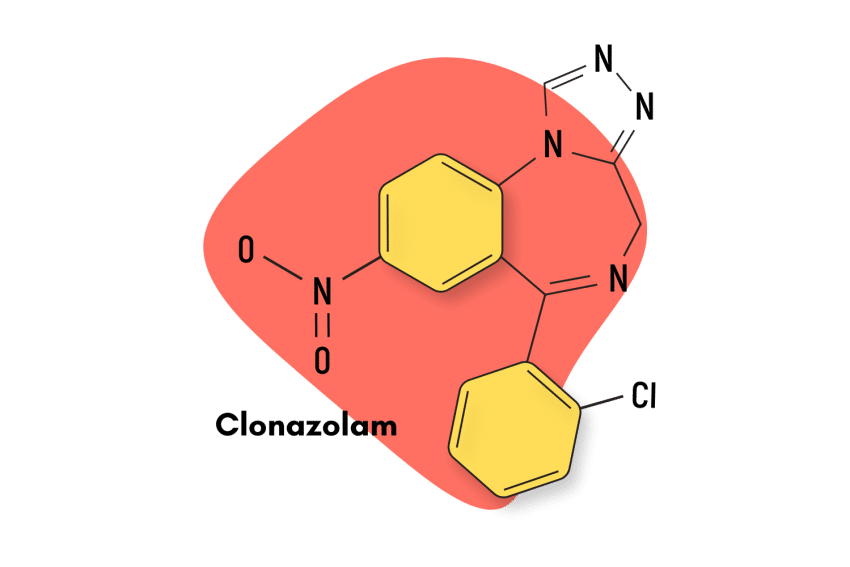
Clonazolam is a highly potent designer benzodiazepine that has been increasingly sold as an alternative to other prescription benzodiazepines. It’s a derivative of clonazepam (Klonopin) and alprazolam (Xanax) with potent sedative, anxiolytic, and muscle relaxant activity.
Clonazolam was first synthesized in 1971 but was not licensed for therapeutic use. It’s never been approved by the US Food and Drug Association (FDA) and is considered a Schedule I drug in a few states, like Virginia, Louisiana, North Carolina, Oregon, and Minnesota.
Schedule I drugs are those with no accepted medical use and a high potential for abuse. However, clonazolam is not under international control and can be bought online in many places as a designer drug.
Clonazolam is sold in powdered form, blotter form, liquid form, and tablet form. The dose is very low due to its exceptional potency.
Since the therapeutic window of the drug is narrow, side effects like severe sedation are commonly seen and often require treatment with Flumazenil, an antidote for benzodiazepine toxicity.
Clonazolam Specs:
| Status: | Not approved |
| Common Dosage: | 0.2–0.4 mg |
| PubChem ID: | 12317881 |
IUPAC Name: 6-(2-Chlorophenyl)-1-methyl-8-nitro-4H-[1,2,4]triazolo[4,3-a] [1,4]benzodiazepine
Other Names: Clon, Clam, C-lam, Clonitrazolam
Metabolism: Clonazolam is extensively metabolized and is mainly excreted as its amino and acetamino metabolites. The main metabolites are 7-aminoclonazolam, hydroxyclonazolam, and 7-acetamidoclonazolam. Both metabolites and parent compounds are eliminated in the urine. The elimination half-life of clonazolam is estimated to be 3.6 hours [1].
Duration of Effects: It starts to work in 20 to 60 minutes, and the effects of the drug last for 8 to 24 hours [2].
What Is The Dose Of Clonazolam?
The drug is available in the form of powder, blotter, liquid, and tablet forms. The common oral administration dose has been reported to be 0.2 to 0.4 mg. A dose of more than 0.5 mg has been found to cause severe sedation and is unsafe for use [3].
How Does Clonazolam Work?
Clonazolam, which is a derivative of clonazepam and alprazolam, works like other benzodiazepines. It binds to the benzodiazepine receptor, which is a part of the GABA-A receptor. Binding to this receptor attenuates GABA (makes it stronger). This results in neuro inhibition (causing sleepiness, calmness, and muscle relaxation).
High doses of GABAergics, including clonazolam, can cause intoxicating effects similar to alcohol or GHB, as well as memory loss and disinhibition.
Is Clonazolam Safe? Risks & Side Effects
There are two qualities that make clonazolam more dangerous than other benzodiazepines — its exceptionally high potency makes it easy to take too much, and its lack of clinical testing means short and long-term safety profiles are completely unknown.
Based on similar drugs like alprazolam and clonazepam, the most serious side effects of clonazolam include profound disinhibition (increasing chances of injury or entering risky situations), respiratory distress, and vomiting.
Consumption of this drug for more than a few days in a row may result in drug dependence. Withdrawal symptoms from benzodiazepines are severe, involving symptoms such as abdominal cramps, anxiety, sweating, tremors, blurred vision, loss of concentration, confusion, and dizziness.
Common Side Effects of Clonazolam
These side effects are commonly associated with clonazolam consumption, and most of them are mild to moderate, lasting for up to 24 hours. Treatment may be required in a few situations.
Common side effects of clonazolam include:
- Drowsiness, lethargy, fatigue, sleepiness, and headaches
- Slurring of speech and blurring of vision
- Tachycardia
- Problems with thinking, reasoning, memory, and attention
- Mood-related problems such as low mood and suicidal thoughts
- Muscle relaxation causes weakness and frequent falls
- Problems with breathing
There are cases reporting serious side effects requiring critical care admission and intubation with mechanical ventilation.
Flumazenil is used as an antidote for the treatment of severe toxicity associated with clonazolam.
Serious side effects of clonazolam may include:
- Severe sedation with difficulty waking up
- Confusion
- Reduced respiratory drive with insufficient breathing
- Loss of consciousness
- Brain tissue damage causes dementia, delirium, and cognitive problems
- Behavioral problems like self-harm or harm to others
- Signs of liver problems, such as yellowish discoloration of the skin and eyes
- Signs of anaphylaxis such as rashes, itching, hives, swelling of lips, tongue, or face, hoarseness of voice, difficulty in breathing, and confusion
- Coma and death
Harm Reduction: Clonazolam
Since the drug is not approved for clinical use, it is better to use other approved benzodiazepines under prescription, such as clonazepam, alprazolam, and diazepam.
However, the following instructions can be followed to reduce the risk associated with the use of clonazolam.
Benzodiazepine Harm Reduction Tips:
- 🥣 Don’t mix — Mixing benzodiazepines with other depressants (alcohol, GHB, phenibut, barbiturates, opiates) can be fatal.
- ⏳ Take frequent breaks or plan for a short treatment span — Benzodiazepines can form dependence quickly, so it’s important to stop using the drug periodically.
- 🥄 Always stick to the proper dose — The dosage of benzos can vary substantially. Some drugs require 20 or 30 mg; others can be fatal in doses as low as 3 mg.
- 💊 Be aware of contraindications — Benzodiazepines are significantly more dangerous in older people or those with certain medical conditions.
- 🧪 Test your drugs — If ordering benzos from unregistered vendors (online or street vendors), order a benzo test kit to ensure your pills contain what you think they do.
- 💉 Never snort or inject benzos — Not only does this provide no advantage, but it’s also extremely dangerous. Benzos should be taken orally.
- 🌧 Recognize the signs of addiction — Early warning signs are feeling like you’re not “yourself” without the drug or hiding your habits from loved ones.
- ⚖️ Understand the laws where you live — In most parts of the world, benzodiazepines are only considered legal if given a prescription by a medical doctor.
- 📞 Know where to go if you need help — Help is available for benzodiazepine addiction; you just have to ask for it. Look up “addiction hotline” for more information about where you live. (USA: 1-800-662-4357; Canada: 1-866-585-0445; UK: 0300-999-1212).
Caution: Clonazolam is Very Potent
Clonazolam is a highly potent drug with a narrow therapeutic window, and a higher dose can cause severe sedation and coma. Only doses lower than 0.5 mg are considered “safe.”
Be very careful to remain within the recommended dosage range of clonazolam to avoid serious adverse effects.
Reducing Benzodiazepine Dependence Risk
Taking the drug for a short time can reduce the risk of dependency. Furthermore, reducing the dose slowly before completely stopping the drug might also be helpful.
Activities to Avoid While Taking Clonazolam
You should avoid certain activities that are risky and require attention, such as driving, operating heavy machinery or electrical equipment, performing surgeries, or flying a plane. The drug can cause sedation and drowsiness. So, it is better to avoid these activities while taking the drug to avoid harm.
Clonazolam Drug Interactions
Alcohol and other sedatives, such as opioids and antihistamines, can aggravate the sedative effects of clonazolam and can result in deep sleep or coma. So, it is better to avoid these medicines and alcohol while consuming clonazolam.
Certain drugs can also reduce the metabolism of Clonazolam, increasing its toxicity, while other drugs can increase the metabolism, reducing the effectiveness of clonazolam.
Avoid Taking Clonazolam If You Have Certain Medical Conditions
You need to inform your doctor if you have any health conditions, as clonazolam may worsen them.
It’s wise to avoid clonazolam (or other benzos) if you have any of the following conditions or symptoms:
- Breathing problems such as COPD, asthma, and sleep apnea
- Conditions affecting respiratory drives, such as brain or spinal cord lesions
- Acute angle closure glaucoma
- Chronic liver disease
- Chronic Kidney disease
- Psychosis
- Pregnancy and lactation
Similar Benzodiazepine Derivatives
There are literally hundreds of benzodiazepines available today — most of them are considered designer drugs or research chemicals and have not been approved for use as medicine.
Most benzodiazepines have similar effects — what makes them different are things like potency, duration of effects, and onset time.
Clonazolam is a short-acting, highly potent benzodiazepine. This means it kicks in quickly and doesn’t last more than about 4 hours (usually closer to 2 or 3).
The most similar benzodiazepines to clonazolam in terms of effects include:
- Pyrazolam — a derivative of bromazepam
- Flubromazolam — a derivative of flubromazepam
- Diclazepam — a derivative of diazepam and lorazepam
- Meclonazepam — a derivative of clonazepam
Clonazolam vs. Other Short To Intermediate-Acting Benzodiazepines [4,5]:
| Clonazolam | Alprazolam | Bromazepam | Diazepam | Chlordiazepoxide | |
| Chemical composition: | 6-(2-Chlorophenyl)-1-methyl-8-nitro-4H-[1,2,4]triazolo[4,3-a][1,4]benzodiazepine | Benzodiazepine with a triazole ring attached to its structure | 1,4-benzodiazepine | 1,4-benzodiazepine | 1,4-benzodiazepine |
| Route of administration: | Oral | Oral | Oral | IV, IM | Oral, IV |
| Onset of action: | 20-60 minutes | 20 to 60 minutes. | 60 minutes | 15 to 60 minutes. | 1 to 2 hours (oral) |
| Peak concentration: | 1 to 2 hours. | 1 to 2 hours. | 1 to 4 hours. | 1 to 1.5 hours. | 2 hours |
| Duration of effects: | Intermediate-acting (8 to 24 hours) | Short-acting (6 to 27 hours) | Intermediate-acting (8 to 19 hours) | Long-acting (20 to 80 hours) | Long-acting (36 to 200 hours) |
| Mechanism of action: | GABA-A receptor agonist | GABA-A receptor agonist | GABA-A receptor agonist | GABA-A receptor agonist | GABA-A receptor agonist |
| Medical Uses: | Panic disorders, anxiety, muscle spasms | Panic disorders, anxiety disorders, insomnia | Anxiety disorder, alcohol withdrawal | Seizures, alcohol withdrawal, insomnia, muscle spasms, panic disorder, anxiety disorders | Panic disorders, alcohol withdrawal, anxiety disorders |
Natural Alternatives To Benzodiazepines
There are few natural alternatives that cause relaxation and sedation, like those of benzodiazepines.
Of course, no plant is going to offer comparable potency to benzodiazepine drugs, which are highly selective for the GABA receptors. Herbs do offer a good alternative for people who want the anxiolytic or sleep-supportive benefits without taking on the risk of addiction to benzodiazepines.
Some natural alternatives to clonazolam include:
1. Chamomile
This is a traditional tea made from chamomile flowers, which is supposed to work by binding to the same receptor as that of benzodiazepine and potentiates the activity of GABA. The tea is well-known for its multiple health benefits, including a calming effect [6].
2. Kava
Kava (Piper methysticum) is a traditional tea that functions to provide calming and anxiolytic effects without the risk of dependence and other side effects such as sedation, drowsiness, headache, and diarrhea. It’s also used for various other health benefits [7].
3. GABA Supplements
There are various GABA supplements available that increase the level of GABA in the blood. However, these supplements have not been found to be as effective as benzodiazepines for the treatment of anxiety and sedation effects. This can be explained by the fact that the increased GABA in the blood cannot cross the Blood Brain Barrier (BBB) to reach the brain tissues for its function.
However, there are studies that have found GABA to be effective at higher doses [8].
4. Gotu Kala
Gotu Kala (Centella asiatica) is an ancient Chinese herb that has been used for the treatment of anxiety, depression, stress, and other mental health conditions. It has also been useful for the treatment of sleep disorders by providing a soothing effect. [9].
5. Psychobiotics
Psychobiotics are food products containing bacteria that are beneficial for the treatment or prevention of mental health conditions. Lactobacillus Brevis and Bifidobacterium dentium are two common bacteria that synthesize GABA, which is helpful for providing calming effects and is used for the treatment and prevention of anxiety. Furthermore, probiotics reduce stress by decreasing the level of stress hormones [10].
Clonazolam FAQs
Answering some of the most common questions we get asked about clonazolam:
1. Is clonazolam approved for therapeutic use?
Clonazolam is not approved by the FDA for clinical use and is classified as a Schedule I drug with the potential for abuse in certain states.
2. Is it safe to use clonazolam?
The drug is highly potent and has a higher risk of severe side effects such as sedation and coma. So, the drug is not considered safe for consumption.
3. Why is clonazolam called a designer benzodiazepine?
Designer benzodiazepines are drugs in the benzodiazepine group that have been manufactured by altering certain chemical structures of the approved and controlled benzodiazepine group of drugs. Since clonazolam is also derived from clonazepam and alprazolam, it is classified as a designer benzodiazepine.
4. Is there a risk of clonazolam dependence?
There is a risk of clonazolam dependence, and you may develop withdrawal symptoms such as agitation, sweating, confusion, and seizures when you abruptly stop the drug. So, to avoid withdrawal symptoms, you should consider a lower dose of the drug and never stop the drug abruptly. It is advised to gradually reduce the dose of the drug before stopping it completely.
References
- Murphy, L., Melamed, J., Gerona, R., & Hendrickson, R. G. (2019). Clonazolam: a novel liquid benzodiazepine. Toxicology Communications, 3(1), 75-78.
- Cornett, E. M., Novitch, M. B., Brunk, A. J., Davidson, K. S., Menard, B. L., Urman, R. D., & Kaye, A. D. (2018). New benzodiazepines for sedation. Best Practice & Research Clinical Anaesthesiology, 32(2), 149-164.
- Moosmann, B., & Auwärter, V. (2018). Designer benzodiazepines: another class of new psychoactive substances. In New psychoactive substances (pp. 383-410). Springer, Cham.
- Gielsdorf, W., Molz, K. H., Hausleiter, H. J., Achtert, G., & Philipp, P. (1986). Pharmacokinetic profile of metaclazepam (Talis®), a new 1.4-benzodiazepine. European Journal of drug metabolism and Pharmacokinetics, 11(3), 205-210.
- Critical Review Report: CLONAZOLAM. (2020). https://www.who.int/docs/default-source/controlled-substances/43rd-ecdd/final-clonazolam-a.pdf?sfvrsn=b8b10967_4
- Mao, J. J., Li, Q. S., Soeller, I., Rockwell, K., Xie, S. X., & Amsterdam, J. D. (2014). Long-term chamomile therapy of generalized anxiety disorder: A study protocol for a randomized, double-blind, placebo-controlled trial. Journal of clinical trials, 4(5).
- Suyono, H., Jong, F. X., & Wijaya, S. (2020). Lavender, cedarwood, and vetiver balm work as anti-stress treatment by reducing plasma cortisol levels. Rec. Nat. Prod, 8, 10-12.
- Boonstra, E., De Kleijn, R., Colzato, L. S., Alkemade, A., Forstmann, B. U., & Nieuwenhuis, S. (2015). Neurotransmitters as food supplements: the effects of GABA on brain and behavior. Frontiers in Psychology, 1520.
- Gohil, K. J., Patel, J. A., & Gajjar, A. K. (2010). Pharmacological review on Centella asiatica: a potential herbal cure-all. Indian Journal of pharmaceutical sciences, 72(5), 546.
- Perez-Burgos A, Wang B, Mao YK, Mistry B, McVey Neufeld KA, Bienenstock J, Kunze W. Psychoactive bacteria Lactobacillus rhamnosus (JB-1) elicits rapid frequency facilitation in vagal afferents. Am J Physiol Gastrointest Liver Physiol. 2013 Jan 15;304(2):G211-20. doi: 10.1152/ajpgi.00128.2012. Epub 2012 Nov 8. PMID: 23139216.

